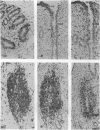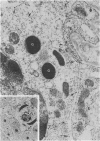Abstract
A panel of monoclonal antibodies was used to define the lymphocyte subpopulations in the sheep uterus at various stages of the oestrous cycle. A striking finding was that the majority of lymphocytes in the uterine and endometrial glandular epithelia belonged to a unique lymphocyte subpopulation that expressed the CD45R antigen but was negative for major histocompatibility complex (MHC) class II molecules and expressed low or undetectable levels of the CD5 antigen. When examined under the electron microscope using the immunogold technique, the CD45R+ lymphocytes were found to have one to three membrane-bound granules in their cytoplasm. Other lymphocyte subpopulations found in the uterus at various stages of the oestrous cycle were localized mainly in the caruncular and intercaruncular stroma. The unique CD45R+ granular lymphocyte subpopulation may be equivalent to the 'natural killer' cells reported in mouse and man, and may have an important role in local immunity of the female reproductive tract.
Full text
PDF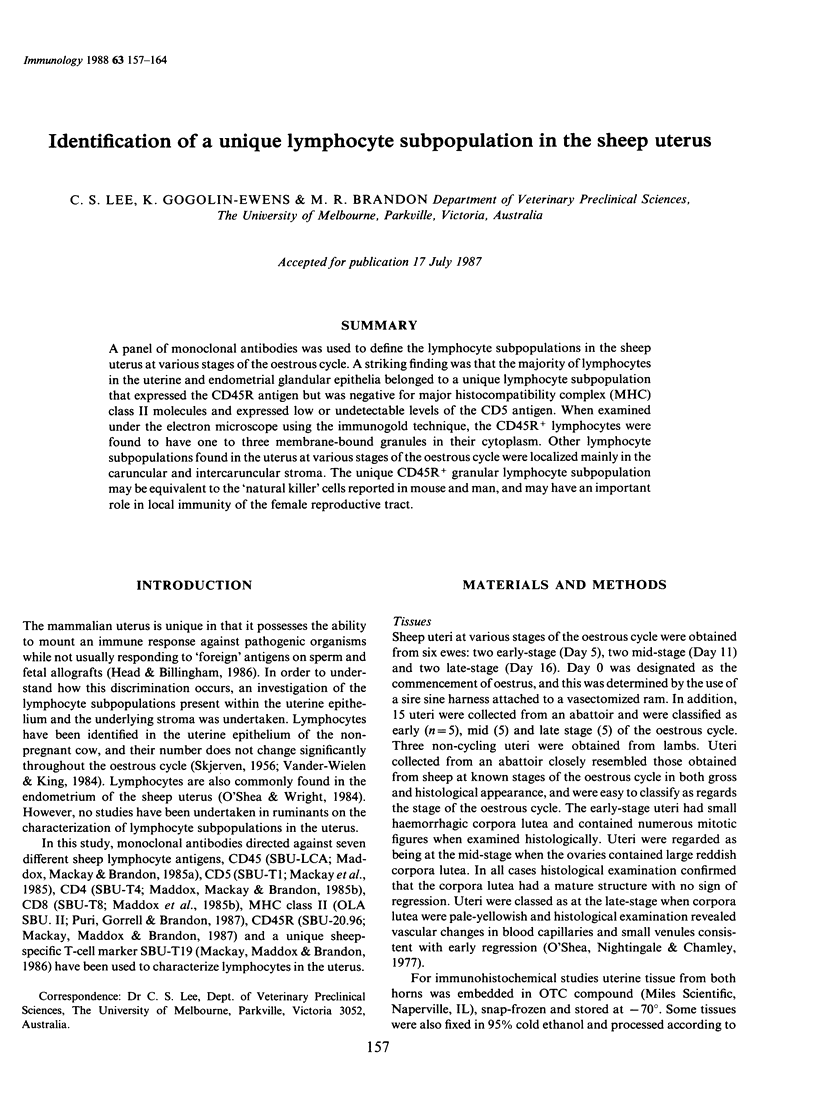
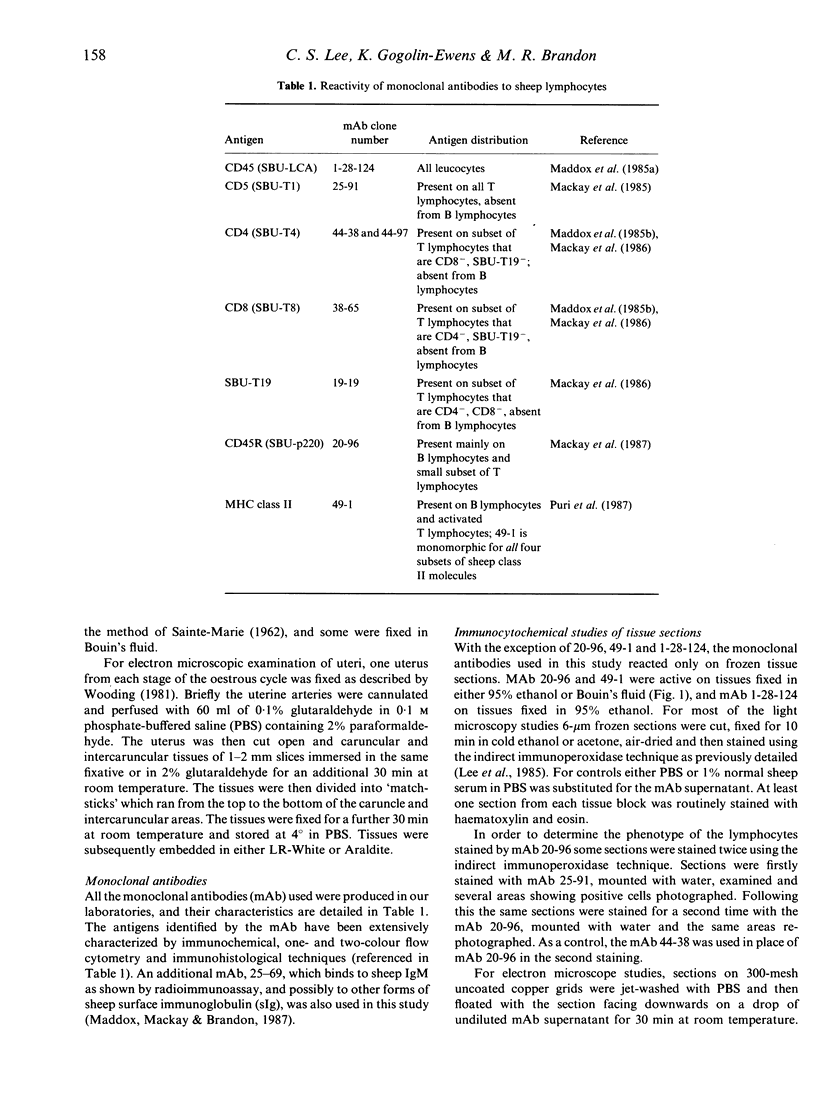
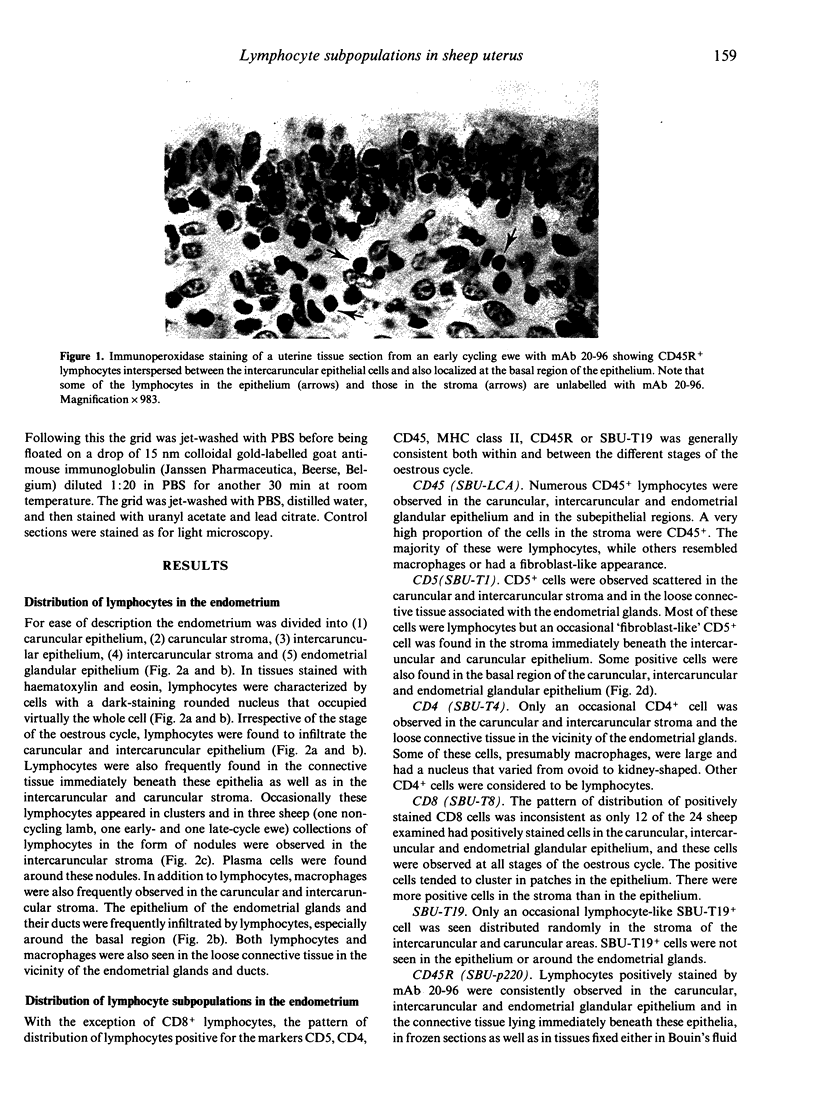
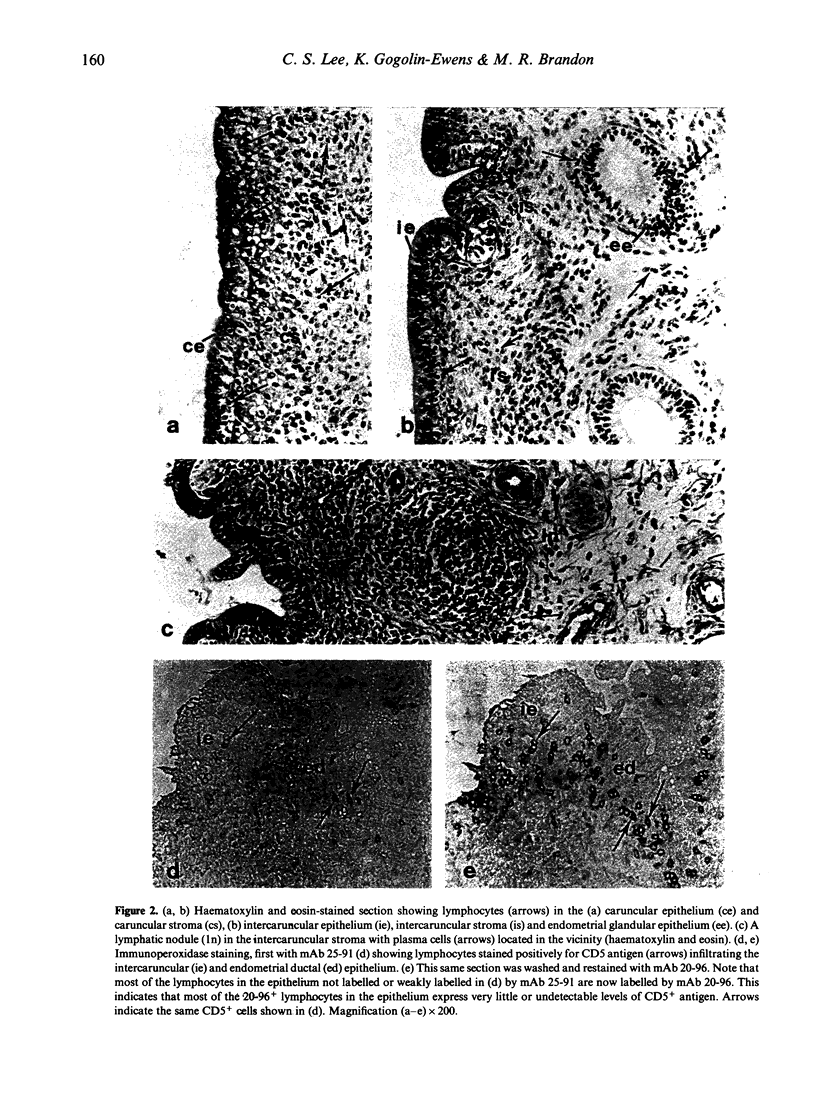
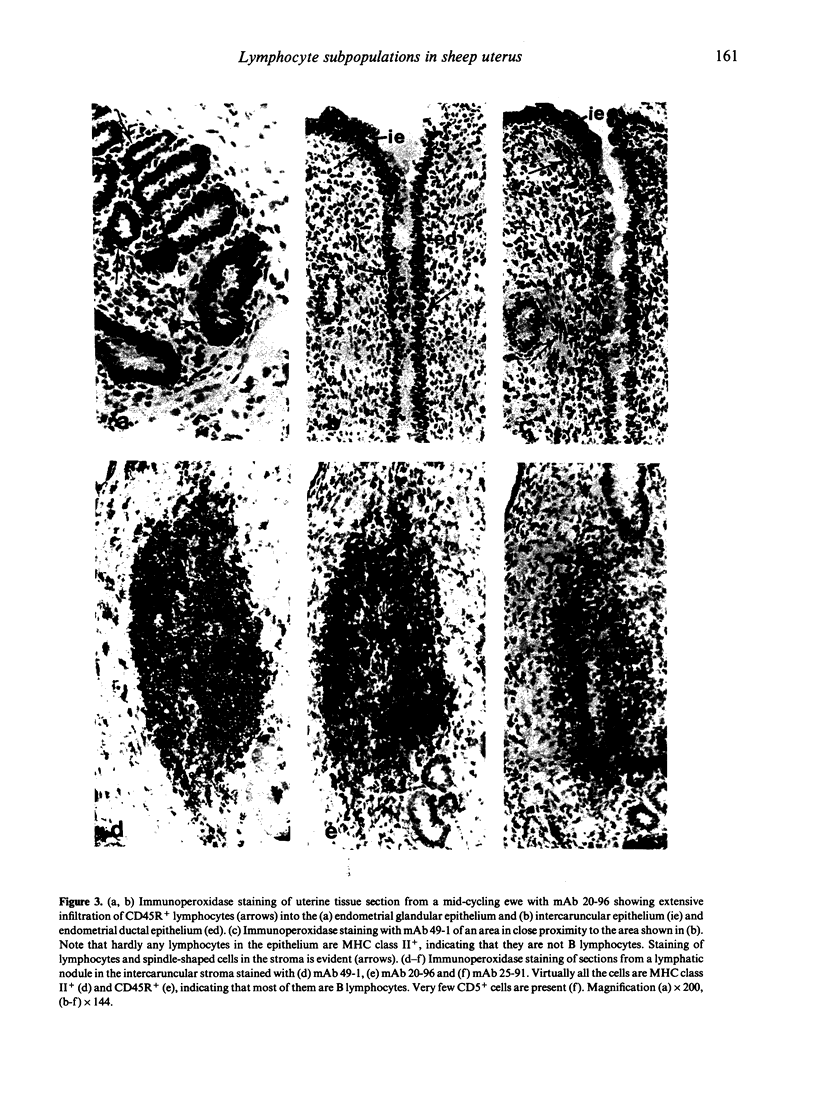

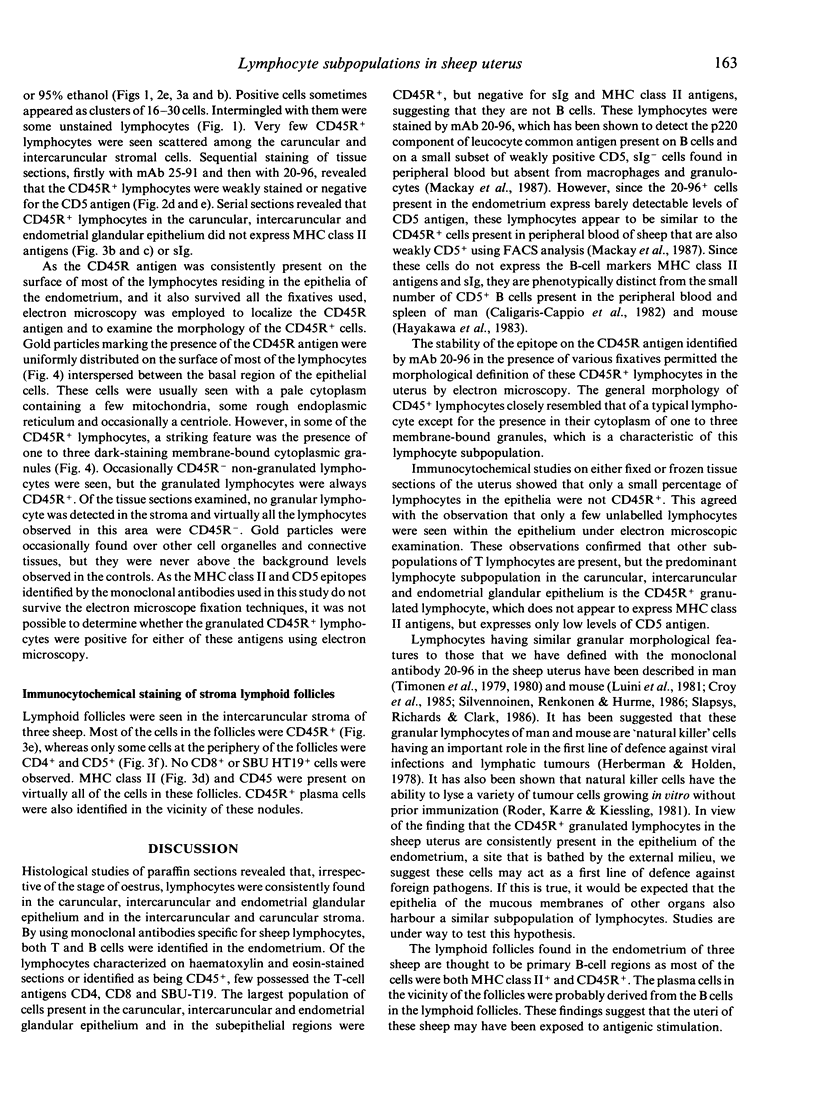
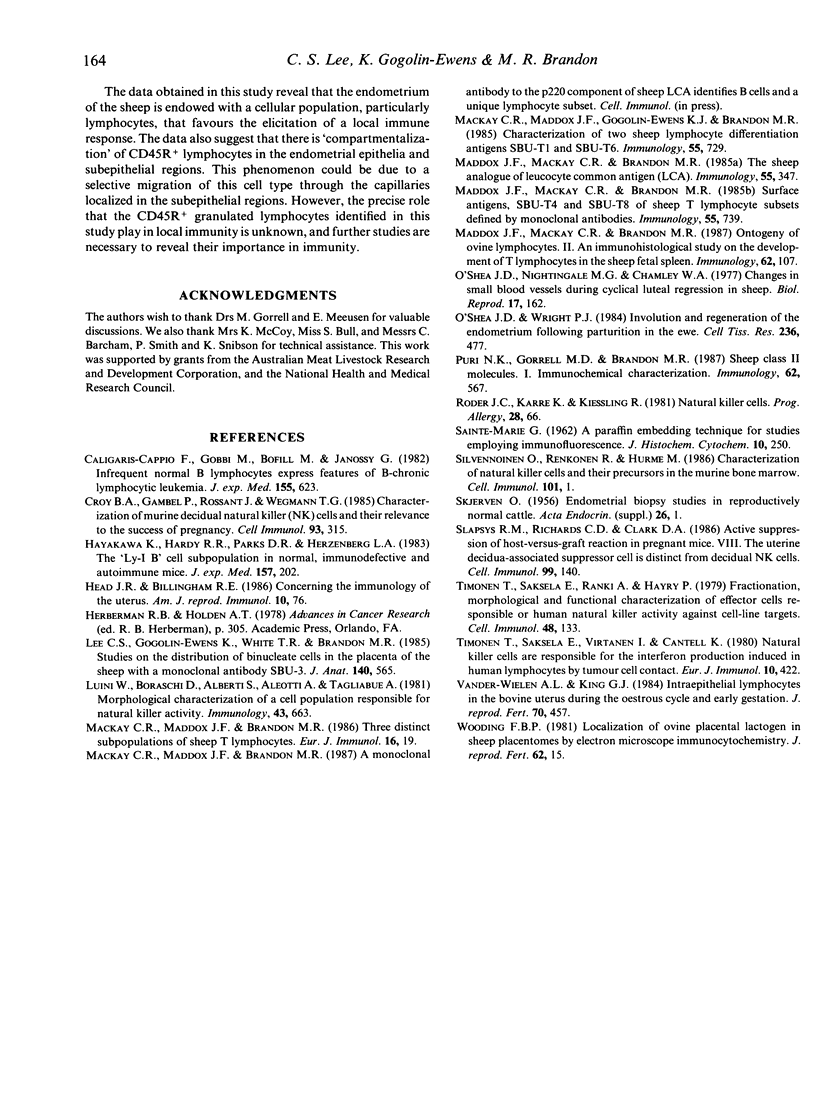
Images in this article
Selected References
These references are in PubMed. This may not be the complete list of references from this article.
- Caligaris-Cappio F., Gobbi M., Bofill M., Janossy G. Infrequent normal B lymphocytes express features of B-chronic lymphocytic leukemia. J Exp Med. 1982 Feb 1;155(2):623–628. doi: 10.1084/jem.155.2.623. [DOI] [PMC free article] [PubMed] [Google Scholar]
- Croy B. A., Gambel P., Rossant J., Wegmann T. G. Characterization of murine decidual natural killer (NK) cells and their relevance to the success of pregnancy. Cell Immunol. 1985 Jul;93(2):315–326. doi: 10.1016/0008-8749(85)90137-6. [DOI] [PubMed] [Google Scholar]
- Hayakawa K., Hardy R. R., Parks D. R., Herzenberg L. A. The "Ly-1 B" cell subpopulation in normal immunodefective, and autoimmune mice. J Exp Med. 1983 Jan 1;157(1):202–218. doi: 10.1084/jem.157.1.202. [DOI] [PMC free article] [PubMed] [Google Scholar]
- Head J. R., Billingham R. E. Concerning the immunology of the uterus. Am J Reprod Immunol Microbiol. 1986 Mar;10(3):76–81. [PubMed] [Google Scholar]
- Lee C. S., Gogolin-Ewens K., White T. R., Brandon M. R. Studies on the distribution of binucleate cells in the placenta of the sheep with a monoclonal antibody SBU-3. J Anat. 1985 Jun;140(Pt 4):565–576. [PMC free article] [PubMed] [Google Scholar]
- Luini W., Boraschi D., Alberti S., Aleotti A., Tagliabue A. Morphological characterization of a cell population responsible for natural killer activity. Immunology. 1981 Aug;43(4):663–668. [PMC free article] [PubMed] [Google Scholar]
- Mackay C. R., Maddox J. F., Brandon M. R. Three distinct subpopulations of sheep T lymphocytes. Eur J Immunol. 1986 Jan;16(1):19–25. doi: 10.1002/eji.1830160105. [DOI] [PubMed] [Google Scholar]
- Mackay C. R., Maddox J. F., Gogolin-Ewens K. J., Brandon M. R. Characterization of two sheep lymphocyte differentiation antigens, SBU-T1 and SBU-T6. Immunology. 1985 Aug;55(4):729–737. [PMC free article] [PubMed] [Google Scholar]
- Maddox J. F., Mackay C. R., Brandon M. R. Ontogeny of ovine lymphocytes. II. An immunohistological study on the development of T lymphocytes in the sheep fetal spleen. Immunology. 1987 Sep;62(1):107–112. [PMC free article] [PubMed] [Google Scholar]
- Maddox J. F., Mackay C. R., Brandon M. R. Surface antigens, SBU-T4 and SBU-T8, of sheep T lymphocyte subsets defined by monoclonal antibodies. Immunology. 1985 Aug;55(4):739–748. [PMC free article] [PubMed] [Google Scholar]
- Maddox J. F., Mackay C. R., Brandon M. R. The sheep analogue of leucocyte common antigen (LCA). Immunology. 1985 Jun;55(2):347–353. [PMC free article] [PubMed] [Google Scholar]
- O'Shea J. D., Nightingale M. G., Chamley W. A. Changes in small blood vessels during cyclical luteal regression in sheep. Biol Reprod. 1977 Sep;17(2):162–177. doi: 10.1095/biolreprod17.2.162. [DOI] [PubMed] [Google Scholar]
- O'Shea J. D., Wright P. J. Involution and regeneration of the endometrium following parturition in the ewe. Cell Tissue Res. 1984;236(2):477–485. doi: 10.1007/BF00214253. [DOI] [PubMed] [Google Scholar]
- Puri N. K., Gorrell M. D., Brandon M. R. Sheep MHC class II molecules. I. Immunochemical characterization. Immunology. 1987 Dec;62(4):567–573. [PMC free article] [PubMed] [Google Scholar]
- SKJERVEN O. Endometrial biopsy studies in reproductively normal cattle; clinical, histochemical and histological observations during the estrous cycle. Acta Endocrinol Suppl (Copenh) 1956;22(Suppl 26):1–101. [PubMed] [Google Scholar]
- Silvennoinen O., Renkonen R., Hurme M. Characterization of natural killer cells and their precursors in the murine bone marrow. Cell Immunol. 1986 Aug;101(1):1–7. doi: 10.1016/0008-8749(86)90180-2. [DOI] [PubMed] [Google Scholar]
- Slapsys R. M., Richards C. D., Clark D. A. Active suppression of host-versus-graft reaction in pregnant mice. VIII. The uterine decidua-associated suppressor cell is distinct from decidual NK cells. Cell Immunol. 1986 Apr 15;99(1):140–149. doi: 10.1016/0008-8749(86)90223-6. [DOI] [PubMed] [Google Scholar]
- Timonen T., Saksela E., Ranki A., Häyry P. Fractionation, morphological and functional characterization of effector cells responsible for human natural killer activity against cell-line targets. Cell Immunol. 1979 Nov;48(1):133–148. doi: 10.1016/0008-8749(79)90106-0. [DOI] [PubMed] [Google Scholar]
- Vander Wielen A. L., King G. J. Intraepithelial lymphocytes in the bovine uterus during the oestrous cycle and early gestation. J Reprod Fertil. 1984 Mar;70(2):457–462. doi: 10.1530/jrf.0.0700457. [DOI] [PubMed] [Google Scholar]
- Wooding F. B. Localization of ovine placental lactogen in sheep placentomes by electron microscope immunocytochemistry. J Reprod Fertil. 1981 May;62(1):15–19. doi: 10.1530/jrf.0.0620015. [DOI] [PubMed] [Google Scholar]





